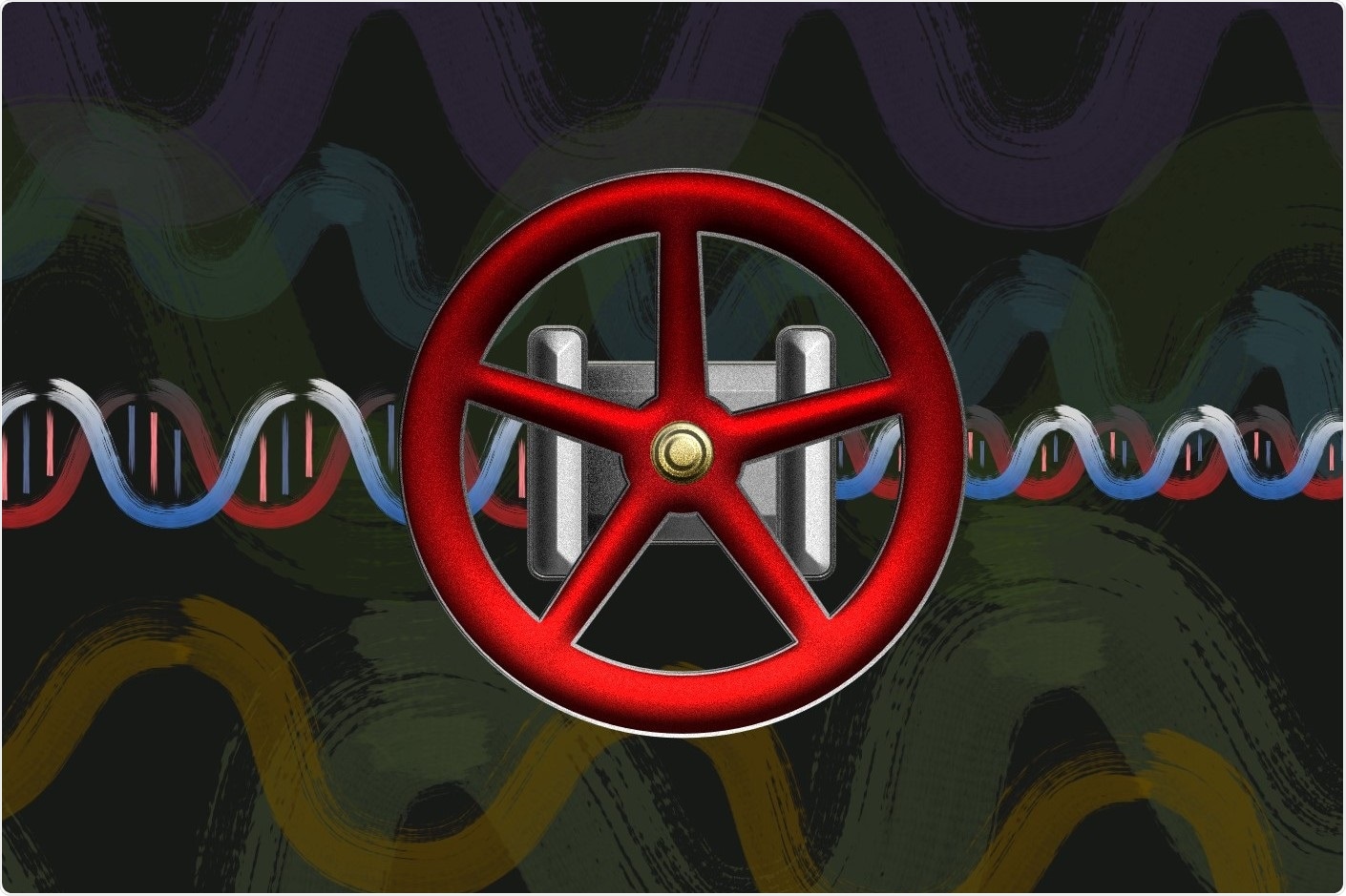Researchers at the University of Bristol have created biological parts that can control cellular processes that flow along DNA.

DNA valve controlling molecular processes along DNA. Image Credit: Thomas Gorochowski.
Researchers have provided new insights into DNA encoding and a new tool for building sustainable biotechnologies as a result of the work. The study was published in the journal Nature Communications.
Microorganisms are integral for survival, although they are invisible to the naked eye. They function using DNA, commonly referred to as the code of life. DNA encodes a variety of tools that could be valuable to individuals. However, understanding how to interpret DNA sequences is still a work in progress.
Understanding the microbial world is tricky. While reading a microbe’s DNA with a sequencer gives us a window into the underlying code, you still need to read a lot of different DNA sequences to understand how it actually works. It’s a bit like trying to learn a new language, but from only a few small fragments of text.”
Matthew Tarnowski, Study First Author and PhD student, School of Biological Sciences, University of Bristol
The research team focused on how the information encoded in DNA is read, and in particular, how the flow of biological processes along DNA is managed to solve this problem. Many of cell’s essential processes are orchestrated by such biological information flows, and the capacity to change them would provide a mechanism to direct cellular behavior.
The scientists focused on how these flows may be controlled by developing “valves” to tune the flow from one section of DNA to another, drawing inspiration from nature, where it is known that DNA flows are often complicated and interconnected.
Similar to a valve that controls the rate that a liquid flows through a pipe, these valves shape the flow of molecular processes along DNA. These flows allow cells to make sense of the information stored in their genomes and the ability to control them enables us to reprogram their behaviors in useful ways.”
Dr Thomas Gorochowski, Study Senior Author and Royal Society University Research Fellow, University of Bristol
New biological parts are generally time-consuming to design. To get around this, the researchers used technologies that allowed them to rapidly assemble numerous DNA components in parallel, as well as a sequencing tool based on “nanopores,” which allowed them to analyze how each element worked at the same time.
Dr Thomas Gorochowski adds, “Harnessing the unique features of nanopore sequencing was the step needed to unlock our ability to effectively design the biological valves. Rather than separately building and testing a couple at a time, we could instead assemble and test thousands in a mixed pool, helping us pull apart their design rules and better understand how they work.”
The scientists go on to explain how valves can be used to regulate other biological components in the cell, potentially paving the way for future genome editing and simultaneous control of several genes.
The team is now thinking about how this technology could be used properly in the future.
Now that they have crafted these tools, a big question is how they can be used responsibly and equitably in the real world. Post-growth entrepreneurship offers useful approaches for imagining more deliberative and inclusive ways to put such technology at the service of people.”
Dr Mario Pansera, Distinguished Researcher, Post-Growth Innovation Lab, University of Vigo, Spain
Source:
Journal reference:
Tarnowski, M. J & Gorochowski, T. E. (2022) Massively parallel characterization of engineered transcript isoforms using direct RNA sequencing. Nature Communications. doi.org/10.1038/s41467-022-28074-5.